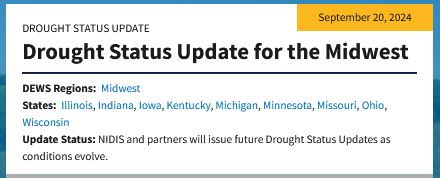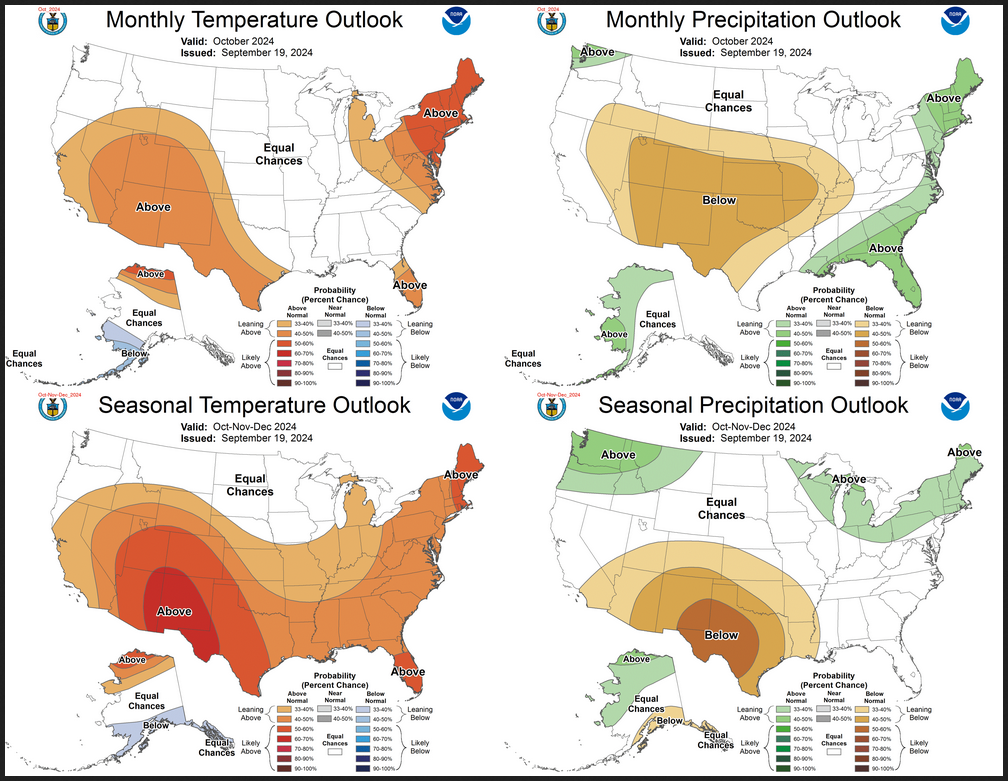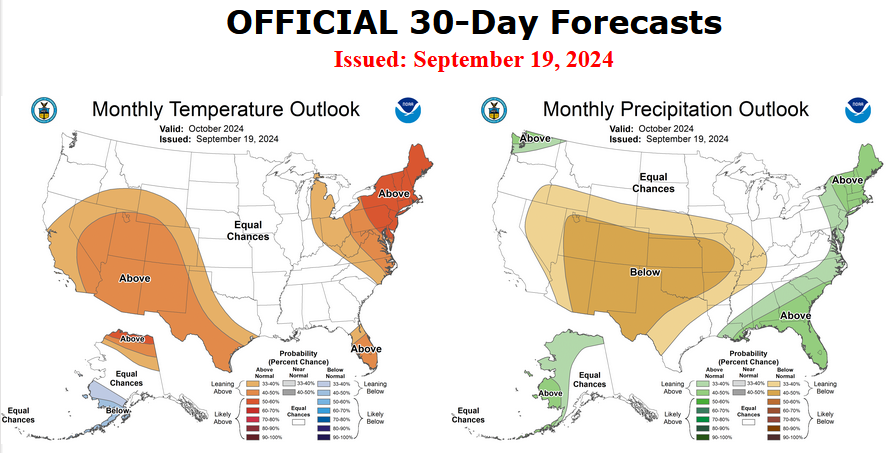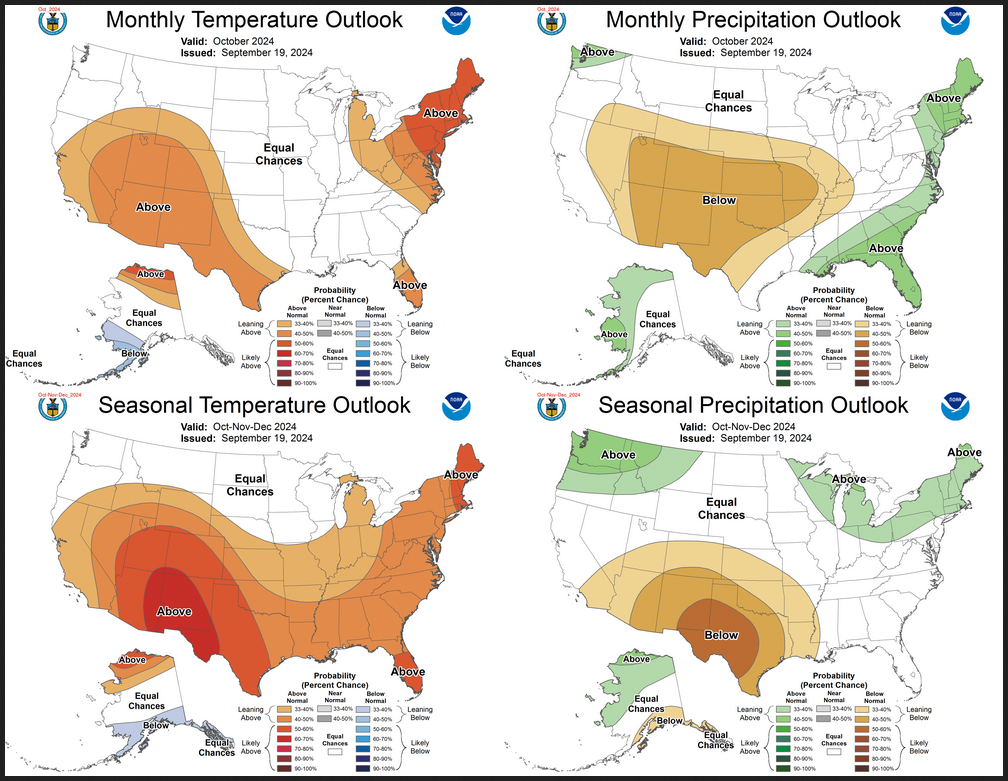Weather Outlook for the U.S. for Today Through at Least 22 Days and a Six-Day Forecast for the World: posted September 26, 2024
This article focuses on what we are paying attention to in the next 48 to 72 hours. The article also includes weather maps for longer-term U.S. outlooks (up to four weeks) and a six-day World weather outlook which can be very useful for travelers.
First the NWS Short Range Forecast. The afternoon NWS text update can be found here after about 4 p.m. New York time but it is unlikely to have changed very much from the morning update. The images in this article automatically update.
Short Range Forecast Discussion
NWS Weather Prediction Center College Park MD
Thu Sep 26 2024
Valid 12Z Thu Sep 26 2024 – 12Z Sat Sep 28 2024…Helene is forecast to rapidly intensify to a major hurricane in the
Gulf today and bring life-threatening impacts to Florida and the Southeast
through Friday……Rare High Risks of excessive rainfall are in place for parts of the
Florida Panhandle where Helene will make landfall, and for the southern
Appalachians where catastrophic flash flooding and landslides are
expected...…Above average temperatures and summer-like warmth forecast to stretch
from the Southwest to northern Plains…Hurricane Helene is moving northward through the Gulf of Mexico this
morning and is forecast to become a major hurricane before making
landfall. Potentially catastrophic hurricane-force winds are expected
within the eyewall of Helene when it makes landfall in the Florida Big
Bend region this evening. Because Helene is becoming a large system and
will initially move inland quickly, damaging and life-threatening
hurricane-force winds, especially in gusts, will penetrate well inland
over portions of northern Florida and southern Georgia late Thursday and
Thursday night where Hurricane Warnings are in effect. Strong wind gusts
are also likely farther north across portions of northern Georgia and the
Carolinas, particularly over the higher terrain of the southern
Appalachians. Additionally, catastrophic and deadly storm surge is likely
along portions of the Florida Big Bend coast, where inundation could reach
as high as 20 feet above ground level, along with destructive waves. There
is also a danger of life-threatening storm surge along the remainder of
the west coast of the Florida Peninsula. Prepare now and heed instructions
from local officials about evacuations in these areas. Please refer to the
National Hurricane Center for the latest updates on the track and timing
of Helene.Helene will also cause significant rainfall and flooding threats. Even
ahead of Helene itself, tropical moisture continues to be pulled north
into the Southeast to southern Appalachians ahead of a slow-moving upper
trough/low and surface front, currently causing rainfall and flooding that
will last through the day. Heavy to extreme rainfall from yesterday has
also led to wet antecedent conditions in places where Helene will track. A
rare High Risk (level 4/4) remains in place in WPC’s Excessive Rainfall
Outlook (ERO) across portions of Georgia into the southern Appalachians
where upslope flow should increase rain totals and varying terrain is
likely to lead to landslides. Additionally, a separate area of extreme
rainfall is also likely near the core of the storm as it passes over the
Florida Panhandle, where a separate High Risk is in effect in the Day 1
ERO. A broad Slight Risk (level 2/4) with an embedded Moderate Risk (level
3/4) over the Appalachians is in place for Friday for continued rainfall.
Overall, Helene is forecast to produce total rain accumulations of 6 to 12
inches, with isolated totals around 20 inches, over portions of the
Southeast into southern Appalachians. Catastrophic and life-threatening
flash and urban flooding, including numerous significant landslides, is
expected across portions of the southern Appalachians through Friday.
Considerable to locally catastrophic flash and urban flooding is likely
for northwestern and northern Florida and the Southeast through Friday.
Widespread significant river flooding and isolated major river flooding
are likely. Another weather hazard associated with Helene to monitor is
the tornado threat, especially on the eastern side of the track. The Storm
Prediction Center is indicating a Slight to Enhanced Risk of severe
weather, primarily for tornadoes, today into tonight for parts of Florida
into Georgia and South Carolina/southeastern North Carolina.Elsewhere, showers and storms are also possible farther north in the
eastern U.S. along the northern part of the frontal system over the next
couple of days. A couple of fronts passing through the Northwest should
lead to some precipitation there and gusty winds. Meanwhile the rest of
the western U.S. stretching into the north-central U.S. can expect dry
conditions with warmer than average temperatures. The Desert Southwest
will see highs well into the 100s and low 110s, which has prompted
Excessive Heat Warnings from south-central Arizona into the high deserts
of southern California. High into the 90s are likely in the northern High
Plains today, with 80s stretching into the Upper Midwest through the end
of the week. Record warm temperatures are possible for both morning lows
and afternoon highs.
To get your local forecast plus active alerts and warnings click HERE and enter your city, state or zip code.









